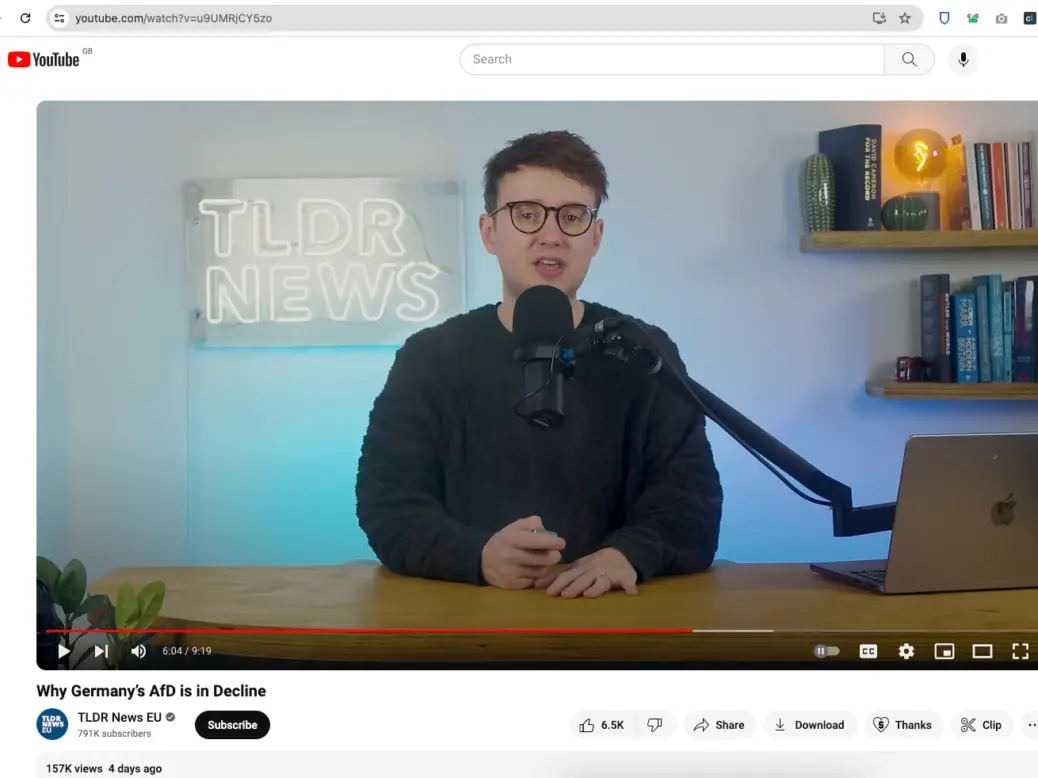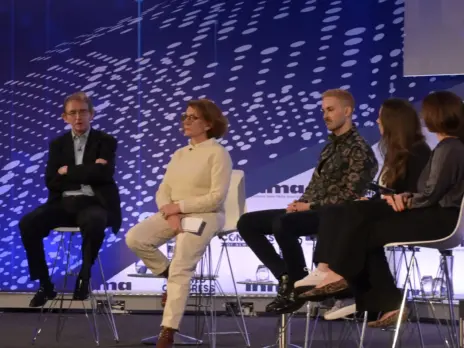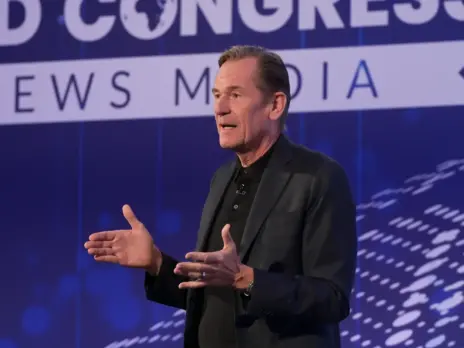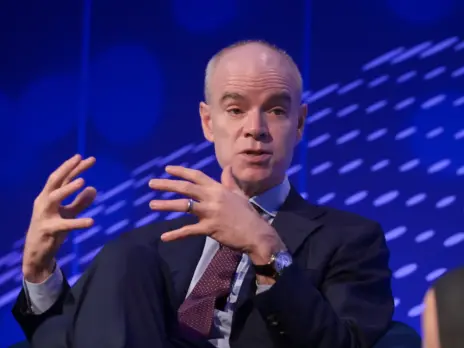
Youtube-based publisher TLDR News is an unusual thing: a profitable news organisation targeted at under-35 year-olds.
Based out of London’s Southbank, ad-supported TLDR News employs 11 people full-time, is profitable on nearly £1m annual turnover and is staffed almost entirely by twenty-somethings.
Its success, albeit on a much smaller scale, contrasts with the high-profile struggles of Buzzfeed and Vice, as well as more recent efforts like The News Movement which has said it is yet to reach profitability.
The acronym tl;dr (too long; didn’t read) is used online to introduce a summary of a long and complex piece of content. To that end TLDR News specialises in explainer journalism: most of its content is eight to ten-minute long videos breaking down complex news stories.
Videos published to TLDR’s six channels this year have titles like: “Why is the UK so bad at building infrastructure?”, “Will South Ossetia join Russia?” and “How Nvidia became America’s third-most valuable company”.
That there is money to be made covering these sorts of weighty topics – not only outside of a paywall, but with young consumers as the audience – may come as a surprise to publishers used to talk of youth news avoidance and shortening attention spans.
Jack Kelly, the publisher’s 27 year-old founder and chief executive, acknowledges that TLDR News’ audience is not necessarily representative of the typical 18 to 35 year-old.
“But there’s definitely a whole bunch of people that do want a more approachable, more friendly, more authentic feeling, almost traditional news outlet,” he said.
Traditional is an apt word: in TLDR News videos, hosts sit behind a desk and deliver a well-planned, opinion-free, teleprompted monologue to camera. It is much closer to the style of BBC analysis editor Ros Atkins than Tiktok’s boisterous news aggregator Dylan Page (aka News Daddy).
“We definitely do appeal to the more young Economist, FT-reader type,” Kelly said. “They’ve maybe not made it to those outlets yet, [those are] maybe still too intimidating – but we’re leaning towards those very curious, quite analytical people, and I think there’s a definite market for that.”
Listen to Press Gazette’s interview with Kelly here:
How does TLDR News make money?
Youtube shares revenue from its programmatically-placed ads with content creators (55% in the case of TLDR), and this split accounts for around 40% of TLDR’s turnover. Another 40% comes from direct-bought sponsorships that see the channel’s hosts read out advertiser material in videos. Sponsorships are handled by TLDR’s agent, Nebula, which also runs the education-themed subscription streaming service of the same name.
The remaining 20% of revenue comes from sources such as payments for panel talk appearances, and in 2023 TLDR News made a £50,000 profit selling a one-off, £9.99 print newspaper titled Too Long.
“We’ve conquered new media, so we jokingly said we’re going back and we’re getting old media too,” Kelly said.
In all, revenue comes in at between £750,000 and £1m a year according to Kelly, and the outlet makes a profit “on almost every video we make”.
“I think why it works is just because there is such a variety of audience,” he said. “I think there is wisdom to the idea that younger generations expect different things from their news, and do want different things. But equally, to pretend that an entire ten-year generation all want the same thing from their news is clearly inaccurate.”
‘If you’re just putting a firehose of content out there, the audience has to be more selective‘
Numerous established publishers are on Youtube: in both of Press Gazette’s annual rankings of the top publishers on the platform to date, Vox has stood out for the greater than two million views its videos get on average, and broadcasters CNN, the BBC and Fox News boast more than ten million subscribers each.
TLDR News did not appear on either ranking because, with 733,000 subscribers on its main channel at time of writing, it did not meet the one million subscriber threshold required for inclusion. But if it had, it would have ranked above Fox and CNN – as well as publishing giants like The New York Times, Sky News and the Daily Mail – for average views per video.
[Read more: Daily Mail expands Youtube presence with Andrew Pierce and Sarah Vine show]
Asked what tips TLDR News could give to established publishers trying to boost their presence on Youtube, Kelly said “a lot of news publishers don’t treat the platform as a creator would”.
“You’re looking at some of these publications that are posting hundreds of videos a day on the same channel… They’ll have some really good videos, no doubt. But there’s also thousands of videos that are getting basically no views.”
Kelly said this broadcast-style approach to Youtube misunderstands the platform.
“The platform works best when you’re building a curated selection of videos and building a connection with an audience.”
Across its six channels TLDR News posts three or so videos a day, or roughly four videos per channel per week.
Kelly said TLDR’s audience knows “that even if the topic maybe isn’t the exact thing they’re most interested in, they trust there’s something interesting there, because we built that connection. If you’re just putting a firehose of content out there, the audience has to be more selective”.
Amid the chaotic news agenda, he said that audiences on Youtube are “looking for filters”.
“They’re looking for people in their lives who can highlight what matters. And I think news organisations have the potential to be that to some extent.”
But he added: “It’s not even about just the quantity that they’re publishing, it’s also about the tone.
“It’s really easy and useful, if you’re a TV news channel, to just clip bits of your show and put them on Youtube. Super easy – you’ve already paid for it, it already exists. The problem is: is that really what your audience on Youtube wants?”
He said that no matter how well scripted the segment, “if it’s a clip from the ten o’clock news, if it’s a clip of someone stood outside a building [looking] very formal in a suit, that just never really has the vibe of Youtube.”
Day to day, Kelly said, audiences “kind of want a trusted friend. They want someone out there that is a connection, that feels like a peer almost, that can select the news that matters to them and present it in a way that makes sense”.
Citing the FT Strategies Next Gen News report, to which he contributed, Kelly said one way for publishers to approach this was by using multiple sub-brands – like TLDR’s multiple channels – or by using individual journalists as a more relatable, human face of the news organisation.
He cited The Wall Street Journal’s Shelby Holliday and Vox’s former Youtube essayist Johnny Harris as successful examples of the latter.
Although TLDR News’ videos are straight and opinion-free, its journalist engage with the audience both through social media and to some extent through the videos themselves: if a video gets a high enough proportion of thumbs-down reacts on Youtube, the outlet will put up another video discussing the audience’s responses and what it may have gotten wrong in the first report.
[Read more: FT Strategies report: How and why news publishers should engage with Gen Z now]
‘If you’re doing a breaking news story, seven days until it gets picked up by the algorithm is just way too long’
TLDR’s approach to Youtube is not the only one that works, Kelly said. Although the platform has been pushing creators toward short-form content recently, he said “there is a lot of data suggesting that the audience is diverging – it’s not just moving towards short form.
“There’s also been a massive uptick lately in really long form videos – you’re talking over an hour – and also specifically in living room viewing on Youtube. There’s been a massive uptick in the number of people who are sitting down and watching more documentary-style, TV-style videos.”
He said some other creators with Nebula “are making two, three hour-long videos and seeing the retention very strong throughout”.
Adapting to short-form content poses its own challenges for TLDR News.
“If you’re a big entertainment [or] comedy creator, just clip the funny moments, the best jokes, the explosions, and that’s a Short” – Shorts being Youtube’s vertical video competitor product to Tiktok and Instagram Reels.
“But for us, it kind of doesn’t work. The most interesting part of one of our videos is nearly always near the end… But the problem is that you need all the context, so if we clip out the really interesting bit, you’ve got something kind of meaningless.”
So instead the publisher puts out themed series of evergreen content for Shorts, in which its hosts talk quickly walk through, for example, European separatist movements. The Shorts feed accounted for 30% of the users who discovered TLDR in the 28 days prior to speaking with Press Gazette, Kelly said, compared with 42% who clicked through from videos suggested on Youtube’s homepage.
“Because we’re batching it and because we’re doing it in themes, we can produce a series in one go, and then drop it day-by-day on a channel. So we found that that kind of more evergreen content performs better [on Shorts] – the things that aren’t super contemporary and super newsworthy.”
Breaking news was not well-suited to the Shorts content recommendation algorithm, he added, noting that after publishing a video, “you will get a big spike in viewership right at the beginning from your existing subscribers, people who’ve got the notifications turned on. They’ll watch it in the first day or so.
“Then it will flatten out for the next seven days, And then the algorithm will pick it up again about a week later. And that’s when either it takes off or bumps a bit and then plateaus again. And the problem with that, obviously, is if you’re doing a breaking news story, seven days [until] it gets picked up by the algorithm is just way too long.”
But Kelly said TLDR News is “quite confident in Youtube as a platform”, saying it was more akin to a streaming platform than a social media network like Facebook or X/Twitter.
“And we kind of think, to some extent, that if Youtube were to fall over overnight, that would be such a catastrophic issue for us anyway that we probably, even if we had diversified, would be kind of screwed regardless.”
Email pged@pressgazette.co.uk to point out mistakes, provide story tips or send in a letter for publication on our "Letters Page" blog






